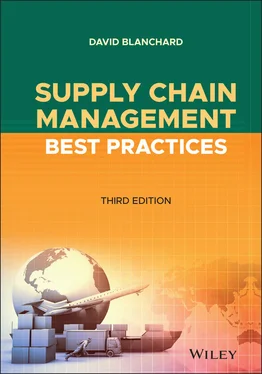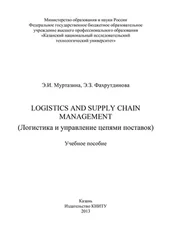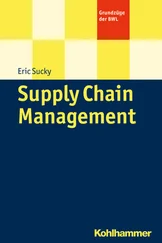Penn State's Center for Supply Chain Research, one of the nation's best-known supply chain programs, once sent out a survey to more than 1,200 supply chain executives asking how satisfied (or unsatisfied) they were with their supply chain benchmarking efforts, and they received barely a 10% response. Even members of the Supply Chain Council's SCOR board—a group whose very existence revolves around promoting the adoption of supply chain standards—initially ignored the survey, presumably because they thought they were being asked to fill out another benchmarking survey. 10
According to the Penn State study, the number-one reason why companies don't undertake supply chain benchmarking actually isn't that these efforts take a lot of time to conduct (that was the number-four reason)—it's due to a lack of resources. Without enough people (and the right people) to participate in benchmarking activities, and without a sufficient budget, a company's efforts to benchmark its supply chain are doomed before the project even gets started.
The number-two reason is that internal measures and processes are difficult to define. If you don't know what you want to measure, then how can you discern if what you're doing is up to industry standards? As the saying goes, you can't manage what you can't measure. The third most prevalent deterrent to benchmarking is the difficulty in identifying proper benchmarking partners.
The prevailing attitude toward benchmarking is that the whole exercise falls somewhere in between “optional” and “pointless,” observes Jim Tompkins, chairman of supply chain consulting firm Tompkins International. But nothing, he emphasizes, could be further from the truth.
“While traditional, backward-looking ‘rate and rank' benchmarking is marginalized by the speed and scope of change, the need for process benchmarking—the identification of global best practices and adapting them to a different product or industry—is more important than ever,” Tompkins says. “These ideas are the potential disruptors that each company must either defend against or adapt in order to gain competitive advantage and create a disruption of their very own.” While some companies think of benchmarking as an exercise in continuous improvement, forward-thinking companies now look upon it as “the source for ongoing, transformational change.” 11
Looking again at the Penn State study, it turns out that more than 90% of the companies who do benchmark are using the results to encourage improved supply chain performance. Reduced operating costs, improved customer service, and improved productivity top the list of accomplishments tied to benchmarking.
“Benchmarking is the process of identifying, sharing, and using knowledge and best practices,” observes Joe Walden, executive director of the University of Kansas's Supply Chain Leadership Center, “which means you've got to admit that someone else does something better than you, and that you can learn something from them.” According to Walden, the key to benchmarking is understanding what you're measuring as well as why you're measuring it. “If you're not measuring from the standpoint of the customer,” he says, “then you're not measuring the right things.”
The right things, Walden explains, include customer order cycle time, dock-to-stock time, fill rates, personnel turnover, training programs, and reverse logistics. “Benchmarking is not industrial tourism,” he says, noting that if your sole motivation is to learn what your competitors are up to, you're missing the whole point. Benchmarking should be used to identify how your industry defines best-in-class, and then to perform a gap analysis. Once you're able to determine the difference (i.e., gap) between where you are and where best-in-class is, then you can take the necessary steps to improve your performance. 12
Although companies typically benchmark themselves against competitors or at least similar companies within their industry, sometimes it's possible to gain that competitive advantage Tompkins mentioned by looking completely outside the usual suspects. ConAgra Mills, for instance, one of the largest grain producers in North America, looked well beyond the agricultural industry to improve its customer service by studying the airline industry.
When he was promoted to president of ConAgra Mills in 2010, Bill Stoufer's background included stints managing the company's transportation and logistics, sales, and supply chain operations. So being well versed in best practices within various departments of his own company, he found a way to better maximize production capacity by looking completely outside of process manufacturing.
As Stoufer (who has since retired) notes, agriculture and air transportation aren't necessarily completely dissimilar. “If a plane leaves with empty seats, they miss the opportunity to maximize their business. It's the same within the milling business.” ConAgra's “empty seats” problem was that some of its flour-producing plants were operating at capacity, while others were not. Since both industries share the same goal—minimizing unused capacity without overcommitting resources—ConAgra turned to an airline best practice of using analytics to predict future market conditions. The solution has allowed the company to focus on producing its most profitable products, and has increased capacity utilization by 3% to 5%. 13
Predictive analytics can also pay off while benchmarking transportation. As Kevin Zweier, vice president of transportation with supply chain consulting firm Chainalytics, explains, “Benchmarks that are modeled in a predictive software platform allow [companies] to assess the difference between transportation rates they are paying, on a lane-by-lane level, against the overall market's rates for the same lanes.” Having access to freight market intelligence, which offers companies deeper insights into the freight transportation markets, allows companies to operate more effectively by ensuring their products “are moving at the best rate for the desired service level.” These model-based benchmarks, Zweier points out, give supply chain and transportation managers key information that can help them negotiate better rates when going to bid. 14 (See Chapter 4for more discussion of freight market intelligence.)
How do you know that you need help in the first place, though? Benchmark studies and process maps are both expensive and time-consuming, and many companies whose earnings put them well outside of the Fortune 500 realize that their supply chains aren't all they ought to be, but they are still hesitant as to what to do about it. Consultant Mike Donovan of R. Michael Donovan & Company offers a relatively short but challenging checklist that provides a basic assessment of how healthy your supply chain might be. If you answer “no” to any of the following questions, or even worse, if you don't even know the answers to some of these questions, then the time to get serious about fixing your supply chain problems is right now:
1 Do your order fill rates meet management's specific and measured customer service strategy?
2 Are your delivery lead times competitive and predictable?
3 Do all of your supply chain departments agree on which products are made-to-stock and which are made-to-order?
4 Do sales and manufacturing share equally in determining the mix and investment in inventory?
5 Are the appropriate calculations being used, rather than “rules of thumb,” to establish the desired mix and levels?
6 Are management's inventory investment plan and customer service objectives being compared against the actual results that are achieved?
Читать дальше












